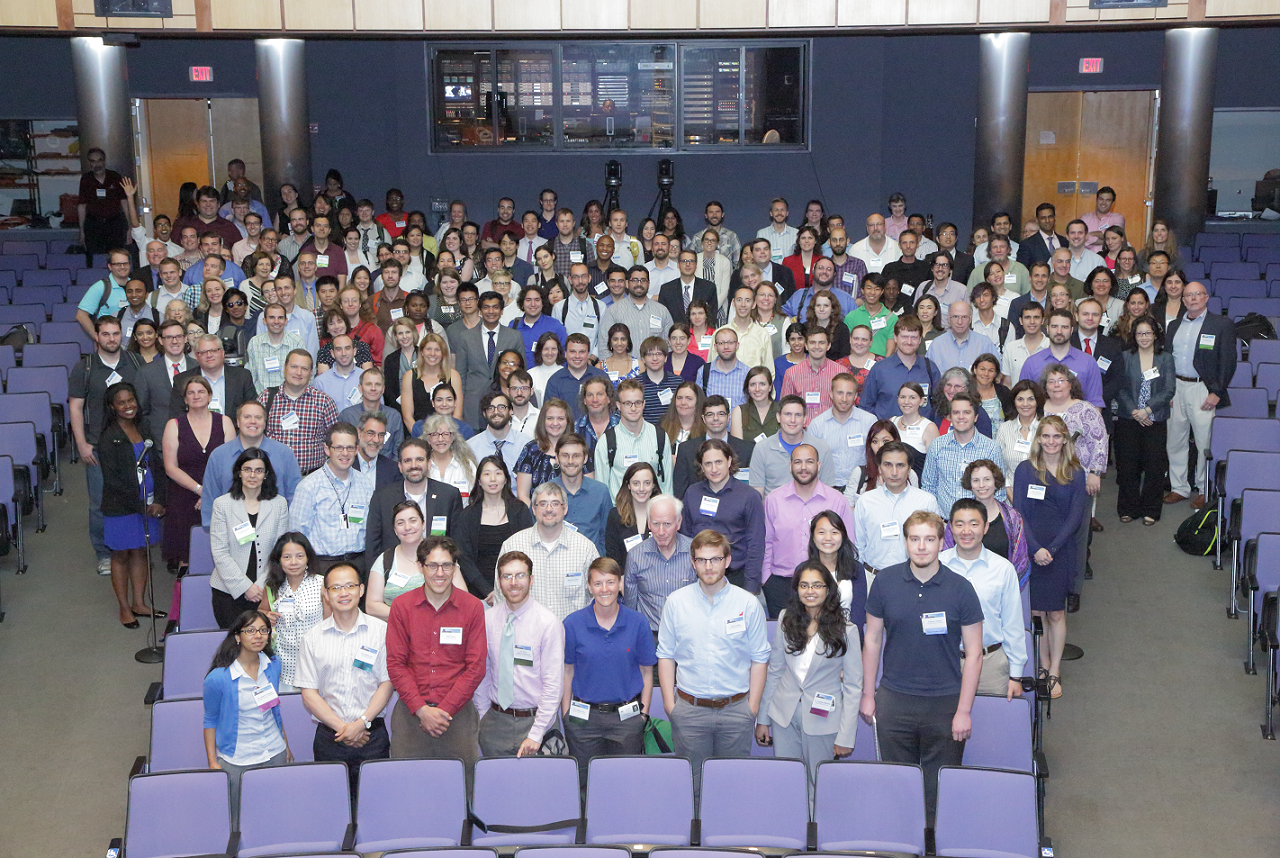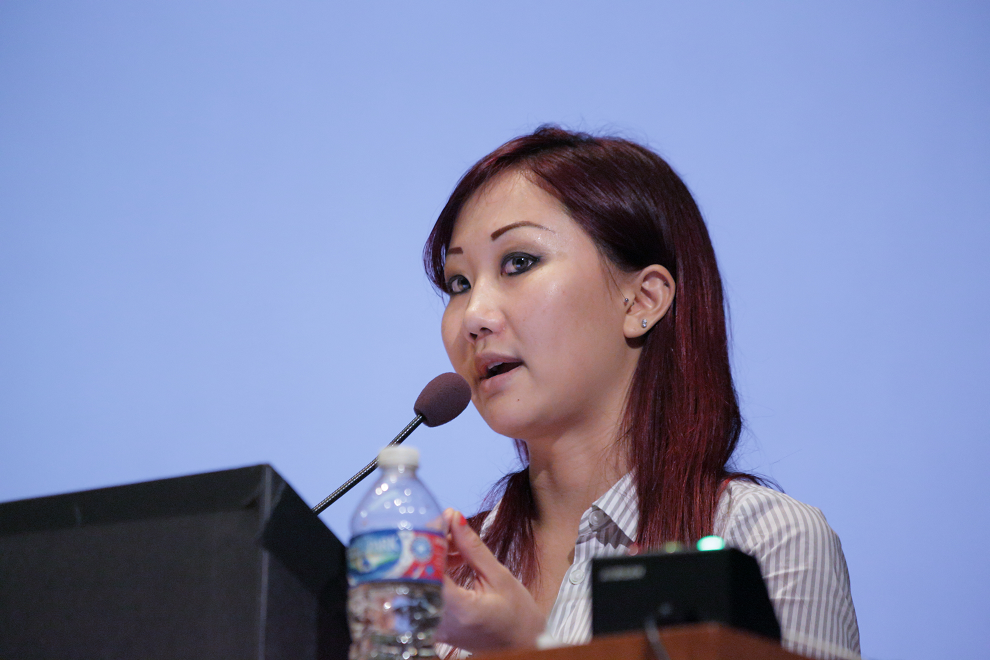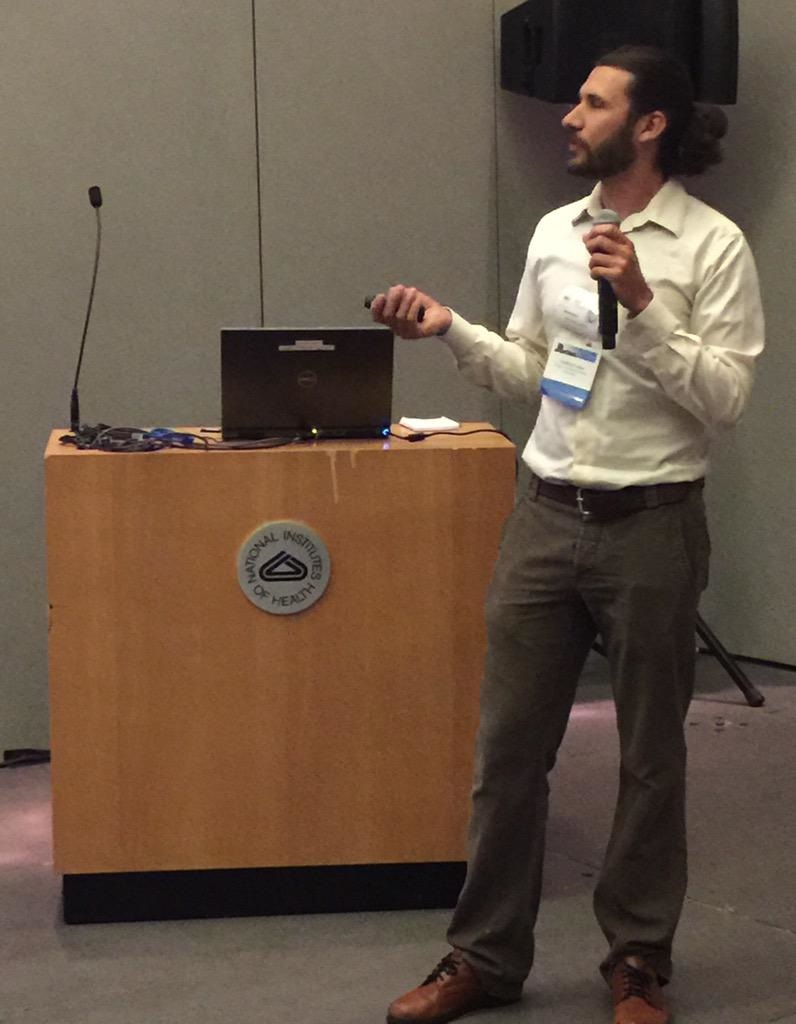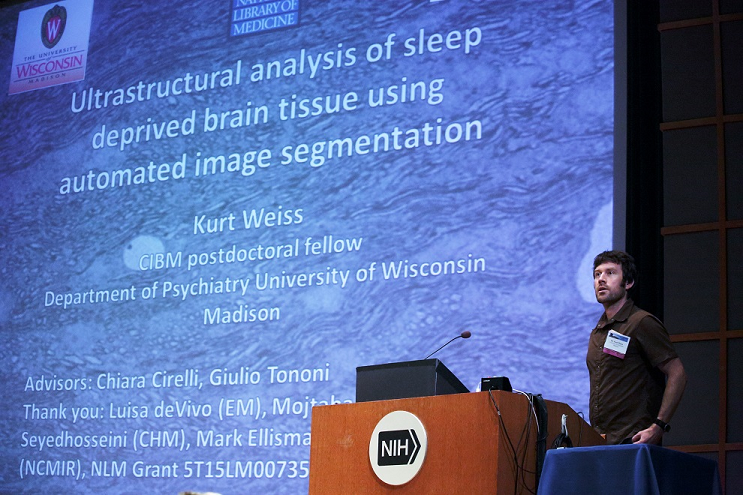

2015 NLM Training Conference Participants
NLM Informatics Training Conference 2015
National Library of Medicine
Bethesda, MD
June 23-24, 2015
The 2015 NLM Informatics Training Conference was hosted by the National Library of Medicine on June 23-24, 2015 in Bethesda, MD. Conference attendees included trainees and faculty from the NLM Biomedical Informatics Research Training Programs, Department of Veterans Affairs informatics trainees, NLM intramural trainees, NIH staff, and guests.
NLM 2015 Informatics Training Conference Awards
Best Presentations
Plenary Session
June 23, 2015
Sharon Chiang
Rice University
Predicting Smoking Relapse through a Bayesian Model for fMRI Biomarker Identification
Plenary Paper Session #2
Abstract:
Despite the fact that cigarette smoking is the leading preventable cause of death in the United States, only 6% of smoking cessation attempts are successful after six months. Two major threats to relapse include smoking to avoid unpleasant withdrawal states, and cue-induced cravings in the presence of cigarette-related stimuli.
In this talk I will present a novel Bayesian statistical model that simultaneously (1) identifies neuroimaging biomarkers for smoking relapse, and (2) predicts the risk of smoking relapse on an individual patient level. The proposed model achieves high prediction accuracy and identifies several brain regions as potential fMRI regional biomarkers of smoking relapse.

Sharon Chiang
Focus Sessions
June 23, 2015
Katie Homann
University of California, San Diego
Systematic Review: Price Transparency in Clinical Care Lowers Cost & Quantity of Tests
Focus Session A1
Abstract:
Fewer than 20% of medical tests have readily available pricing (Bernstein, 2014). This significantly impacts patients, as they are paying a larger portion of their healthcare costs (Claxton, 2013) and the prices vary significantly between sites (Cauchi, 2013; Green, 2014). Price transparency is one proposed solution, however, it requires review of the scientific literature. Applying the PRISMA Systematic Review Criteria, we investigated PubMed and Web of Science databases for articles on price transparency. Over 2000 articles were identified, 69 articles met criteria for additional screening, and 11 met inclusion criteria as empirical studies. Price transparency lowered costs in the majority of articles (9 of 11, or 82%). In these studies, total costs decreased 3% to 37%, and number of tests decreased by 4.5% to 27%. Methodology varies between articles and literature in this field remains sparse. However, these findings suggest value in further exploring price transparency to control healthcare costs.

Katie Homann
June 23, 2015
Aubrey Barnard
University of Wisconsin-Madison
Identifying Adverse Drug Events Using Markov Networks and Temporal Dependence
Focus Session A2
Abstract:
Adverse drug events (ADEs) are a serious concern for public health. The scale of the problem has created a pressing need for automatic, computational approaches for ADE identification that will augment the existing spontaneous reporting, clinical research, and epidemiological studies. This talk/poster presents such a method for causal discovery in observational medical data that combines the probabilistic modeling of patient histories with scores that measure temporal dependence. Testing this Markov-network-assisted temporal scoring approach on a task and 5 datasets from the Observational Medical Outcomes Partnership shows that it can identify ADEs as well or better than existing epidemiological methods.

Aubrey Barnard
June 24, 2015
Nathan H Lazar
Oregon Health & Science University
Bayesian Tensor Factorization to Predict Drug Response in Cancer Cell Lines
Focus Session B3
Abstract:
Precision oncology aims to improve cancer patient outcomes by tailoring treatment to a given patient's tumor. Cell line screening panels give information on how specific tumors may respond to drugs by measuring the growth of tumor cells after exposure to compounds at varying doses in a high-throughput manner. By combining information from these panels with ‘omic profiles of cell lines as well as structural and target information on drugs we can build models to predict response and gain insight into response mechanisms.
Our method decomposes a central three-dimensional tensor encoding the responses of 70 breast cancer cell lines treated with 90 drugs at 10 doses into factors representing characteristics of the cell lines and compounds. By reconstructing the central tensor object from these factors, we predict full dose-response curves for missing cell line-drug combinations and can extrapolate to unseen cell lines and drugs. The use of Bayesian sparsity-inducing priors while training the model allows for the automatic determination of the most informative features. Lastly, by incorporating all of the data into one model, we are able to leverage information from each cell line and drug for the prediction of the others and examine relationships between cell line and drug features.

Nathan Lazar
Best Poster
June 23, 2015
David Noren
Rice University
Predicting Therapeutic Response and Prognosis in AML: A Crowdsourcing Approach
Poster Session Day 1 – Bioinformatics/Computational Biology
Abstract:
Acute Myeloid Leukemia (AML) is a very potent form of cancer which currently has limited treatment options and a low 5 year survival rate (~25%). Although cytogenetic information has proven insightful in selecting personalized therapies for patients, the overall effectiveness of treatment remains low for AML. Clinical proteomics assays, like Reverse Phase Protein Array (RPPA), offer a more direct measure of the alterations of signaling pathways, which are the molecular targets of most cancer therapeutics. Unfortunately, incorporating clinical RPPA data into AML patient prognosis and therapy selection has been challenging due to the pronounced heterogeneity in patient characteristics and the noise inherent in the proteomics data.
Crowd sourcing experiments have proven effective in providing deeper insight into problems requiring complex data analysis. Using RPPA data and clinical information, we developed a number of baseline statistical models to predict AML patient response to therapy, relapse time, and survival time. We then designed the DREAM 9 AML Outcome Prediction Challenge as a crowd sourcing experiment, encouraging participants to develop more effective models. Through this effort, we were able to determine the patient characteristics which most impact prediction accuracy. In addition, we gained insight towards developing an improved method to determine patient prognosis.

David Noren
Best Open Mic
Day 1: June 23, 2015
Kurt Weiss
University of Wisconsin

Kurt Weiss
Last Reviewed: December 24, 2015


